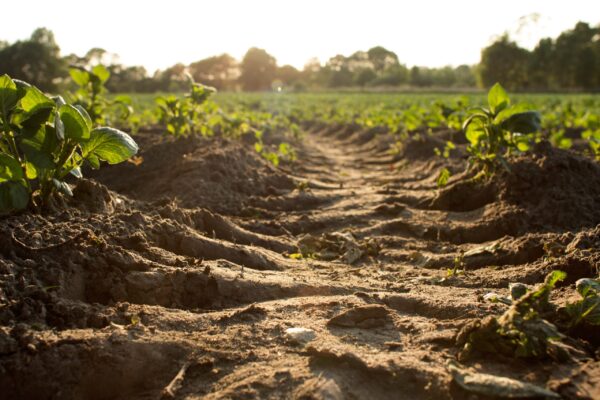- This topic is empty.
- AuthorPosts
- January 21, 2025 at 11:14 pm #543077

Erosion poses a significant threat to farmland, leading to soil degradation, reduced productivity, and environmental damage.
As the global demand for agricultural products continues to rise, it is crucial for farmers to implement effective erosion control measures to safeguard their land and maintain sustainable productivity.
In this article, we will explore some essential strategies to help farmers control erosion and preserve the integrity of their farmland.
1. Conservation Tillage
One of the most effective erosion control practices is conservation tillage. This method involves reducing or eliminating traditional plowing and leaving crop residues on the soil surface after harvest.
By preserving crop residues, the soil remains protected from wind and water erosion, allowing water to infiltrate and roots to establish more easily.
Conservation tillage also improves soil structure, promotes nutrient retention, and reduces the overall carbon footprint of farming operations.
2. Cover Crops
Planting cover crops during fallow periods is another valuable approach to control erosion on farmland. Cover crops, such as legumes, grasses, and other green manure plants, help prevent soil erosion by binding soil particles together with their root systems.
They also enhance soil organic matter, improve water retention, and add nutrients to the soil. Cover crops serve as a protective blanket for the land, minimizing erosion risks during heavy rainfall or windy conditions.
3. Terracing
Terracing is an ancient agricultural technique that involves creating level platforms on sloped farmland. These terraces act as barriers, slowing down water runoff and preventing soil from being washed away.
Terracing also helps to evenly distribute water across the farmland, reducing the risk of erosion caused by concentrated water flow.
In addition to erosion control, terracing facilitates efficient irrigation and cultivation, enabling farmers to grow crops effectively on hilly or mountainous terrain.
4. Contour Farming
Contour farming is an erosion control technique that follows the natural contours of the land. Instead of planting crops in straight rows up and down the slope, farmers plant across the slope, creating contour lines.
This method helps to intercept water and reduces its velocity as it flows downhill, minimizing erosion. By maintaining consistent moisture levels and preventing soil loss, contour farming contributes to sustainable agriculture and long-term soil health.
5. Windbreaks
For farmlands located in regions prone to strong winds, planting windbreaks is essential for erosion control. Windbreaks are typically rows of trees, shrubs, or tall grasses planted around the perimeter of the farmland.
These natural barriers reduce wind speed, preventing soil particles from being carried away by the wind. Windbreaks also protect crops from wind damage, create a microclimate that is more favorable for growth, and provide habitat for beneficial wildlife.
6. Grassed Waterways
Grassed waterways are channels strategically designed to carry excess water away from fields while minimizing soil erosion. These waterways are often lined with grass or other vegetation, which stabilizes the soil and filters out sediment before the water reaches natural drainage systems.
Grassed waterways also enhance biodiversity by providing habitat for various species and contribute to overall watershed health.
In conclusion, erosion control on farmland is not only crucial for maintaining agricultural productivity but also for preserving the environment and natural resources.
Implementing sustainable erosion control strategies such as conservation tillage, cover cropping, terracing, contour farming, windbreaks, and grassed waterways can help farmers protect their soil, reduce the impact of extreme weather events, and contribute to the long-term sustainability of agriculture.
By embracing these practices, farmers can ensure their farmland remains productive for future generations while safeguarding the delicate balance of our ecosystem.
- AuthorPosts
- You must be logged in to reply to this topic.

